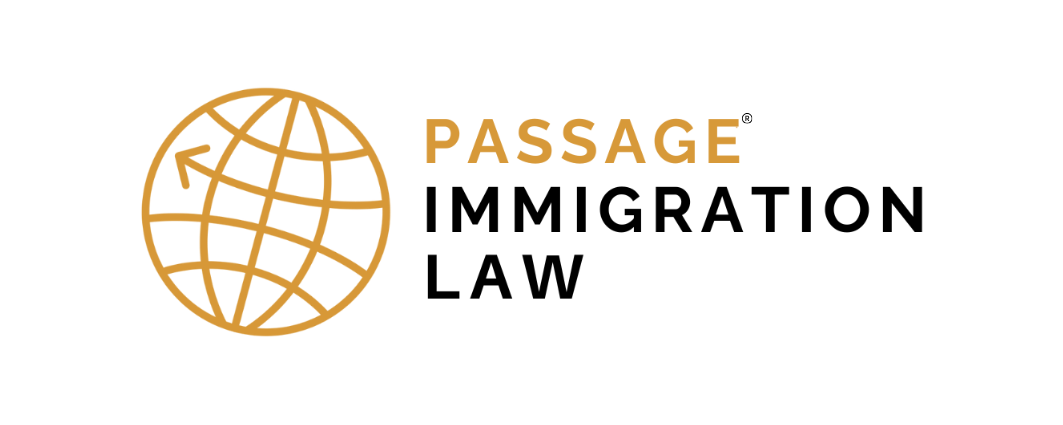Navigating international travel can be complex, and for many travelers, a layover in the United States is a necessary part of their journey. If you’re flying through the U.S. on your way to another country, you may be surprised to learn that you often need a specific visa—even if you don’t plan to leave the airport. This guide will walk you through everything you need to know about the U.S. transit visa, officially known as the C-1 visa, and how to apply for one.
What is a U.S. Transit Visa?
A U.S. Transit Visa, or C-1 visa, is a non-immigrant visa that allows foreign nationals to travel through the United States to a final destination in another country. It’s designed for individuals who are in “immediate and continuous transit,” meaning their stay is limited to the time required for their connecting flight or onward travel.
- Key purpose: To permit a brief layover in the U.S. without an intention to remain.
- Who needs one? Most foreign citizens who are not part of the Visa Waiver Program (VWP) or do not hold a valid B-1 (business) or B-2 (tourism) visa will need a C-1 visa for a layover in the U.S.
Still unsure if you need a C-1 visa?
Get a personalized assessment from our expert legal team today.
Do You Need a U.S. Transit Visa?
The question, “Do I need a visa for a connecting flight in the U.S.?” is a common one. The answer depends on your nationality and specific circumstances.
You will likely need a C-1 visa if:
- You are a citizen of a country that is not a member of the Visa Waiver Program.
- You have a layover in the United States, even if you do not plan to leave the airport’s international transit area. Unlike many other countries, the U.S. requires all non-exempt travelers to pass through immigration and customs, even for a simple flight connection.
You may not need a C-1 visa if:
- You are a citizen of a Visa Waiver Program (VWP) country. Citizens of VWP countries can transit the U.S. for up to 90 days with an approved Electronic System for Travel Authorization (ESTA). Note: Even with ESTA, you must have a valid passport and meet all other VWP requirements.
- You already hold a valid U.S. B-1 (Business) or B-2 (Tourist) visa. These visas generally permit travel through the U.S. for transit purposes, as long as you adhere to the terms of your visa.
How to Apply for a U.S. Transit Visa (C-1 Visa)

The application process for a C-1 visa is similar to that of other U.S. non-immigrant visas. Follow these steps to ensure a smooth application.
Step 1: Determine Your Eligibility
Before you begin, confirm whether you truly need a C-1 visa. As mentioned, if you are a citizen of a VWP country, an ESTA is the more common and efficient option. For all other travelers, a C-1 visa is the correct path.
Step 2: Complete the Online DS-160 Form
The DS-160 is the official online application form for all U.S. non-immigrant visas. Be sure to select “C-1” as your visa type. You will need to provide:
- Personal information (name, date of birth, nationality).
- Passport and travel history.
- Your complete travel itinerary, including your final destination.
- Information about your occupation and education.
- Crucial Tip: Answer all questions accurately and honestly. Any discrepancies can lead to delays or a visa denial.
Step 3: Pay the Visa Application Fee
Once you’ve completed the DS-160, you must pay the non-refundable visa application fee. This fee varies depending on the visa type but is typically $185 USD for most non-immigrant visa categories, including the C-1. Always check the official website of the U.S. Embassy or Consulate in your country for the most up-to-date fee schedule.
Step 4: Schedule a Visa Interview

After paying the fee, you will schedule an interview at the U.S. Embassy or Consulate in your country of residence. The interview is a mandatory part of the process for most applicants.
Step 5: Prepare for Your Interview
Gather all necessary documents for your interview. Being well-prepared is key to a successful outcome. You will need:
- A valid passport.
- The confirmation page of your DS-160 form.
- The receipt for your visa application fee payment.
- Your complete travel itinerary and proof of onward travel (e.g., flight tickets to your final destination).
- Supporting documentation to demonstrate your ties to your home country (e.g., proof of employment, family ties, property ownership).
- A letter or other documentation proving your purpose of travel.
During the interview, the consular officer will verify your information and ask questions about your travel plans. Be prepared to clearly state your reason for transiting through the U.S. and show that you have no intention of staying beyond your layover.
Step 6: Attend the Visa Interview
The interview is a chance for the consular officer to assess your eligibility and ensure your intentions are genuine. Common questions include:
- “Why are you transiting through the U.S.?”
- “What is your final destination?”
- “Do you have a visa for your final destination?”
Answer all questions clearly and confidently.
Step 7: Receive Your Visa

If your C-1 visa application is approved, the visa will be affixed to a page in your passport. Before traveling, carefully review all the information on the visa to ensure it is accurate.
Unlock the Answers to Your Immigration Questions. Download our FREE Q&A Guide.
Important Considerations for Your U.S. Transit
- Processing Times Vary: Visa processing times can take several weeks or even months, depending on the embassy or consulate and local demand. Apply well in advance of your planned travel date.
- Temporary and Limited: A C-1 visa is for transit purposes only. It does not allow you to leave the airport for sightseeing or other activities, nor can it be used for an extended stay in the U.S.
- Onward Travel is Essential: You must have a confirmed itinerary and permission to enter your final destination country. This is a critical requirement for a C-1 visa.
Important Points to Remember
- Transit Visas Are Temporary: Your transit visa for the USA is valid just for your layover. It cannot be used to keep in the United States for a long length of time.
- No Sightseeing Allowed: Your C-1 visa forbids you from leaving the airport or flying within the United States. Your transportation needs to be only meant to get you to your connecting plane.
- Visa Processing Times: Starting the application procedure well in advance of your travel is crucial because applying for a U.S. transit visa might take many weeks. This should help you to design your travel schedule.
Common Questions about U.S. Transit Visas
-
Do connecting flights call for a transit visa?
Indeed, you will need a transit visa USA for connecting flights if you are passing the United States but are not a part of the Visa Waiver Program.
-
Do I need a visa to transit through the USA if I don’t plan to leave the airport?
Indeed, even if your only stop is an airport without departing, you will need a transit visa USA.
-
What paperwork does a U.S. transit visa require?
You will require proof of forward travel to your ultimate destination, a valid passport, a completed DS-160 form, and a visa fee payment receipt.
-
What length of time does a U.S. transit visa’s processing take?
Though processing durations vary, approval for a transit visa for the USA usually takes several weeks. Apply early to avoid delays.
-
Can I extend my stay with a U.S. transit visa?
No, a C-1 visa forbids extended stays or extensions in the United States.
Final Thoughts: Successfully Navigating the U.S. Transit Visa Process

Although navigating the U.S. transit visa application procedure can be difficult, you can avoid typical mistakes with enough knowledge of the requirements and readiness. Start your application early, provide accurate and comprehensive evidence, and be aware of the restrictions of your transit visa for the USA.
Choose Passage Immigration Law:
Ready to start your C-1 visa application? Contact our experienced immigration lawyers at Passage Immigration Law for professional, seamless support.
Disclaimer:
- This article provides general legal information only and is not legal advice.
- Do not act on this information without consulting a qualified attorney about your specific situation.
- Every case is unique, and outcomes will vary.
- We are not responsible for actions taken based on the information in this article.
- To get legal advice, please contact us directly to speak with an attorney.







